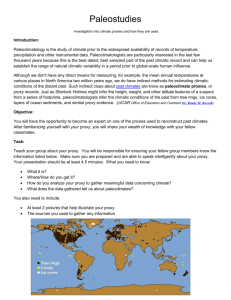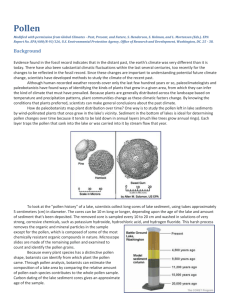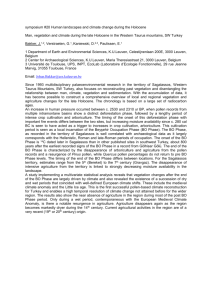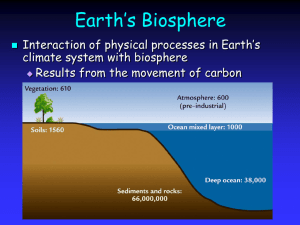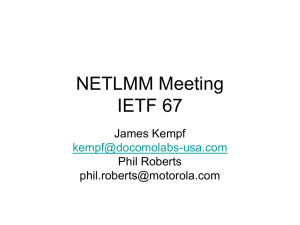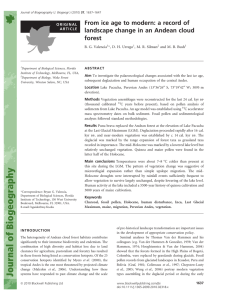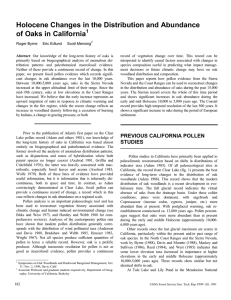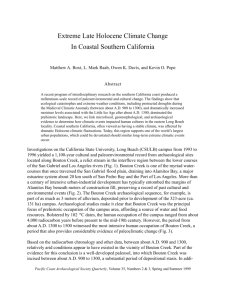Intercomparisons of model and proxy data for mid
advertisement
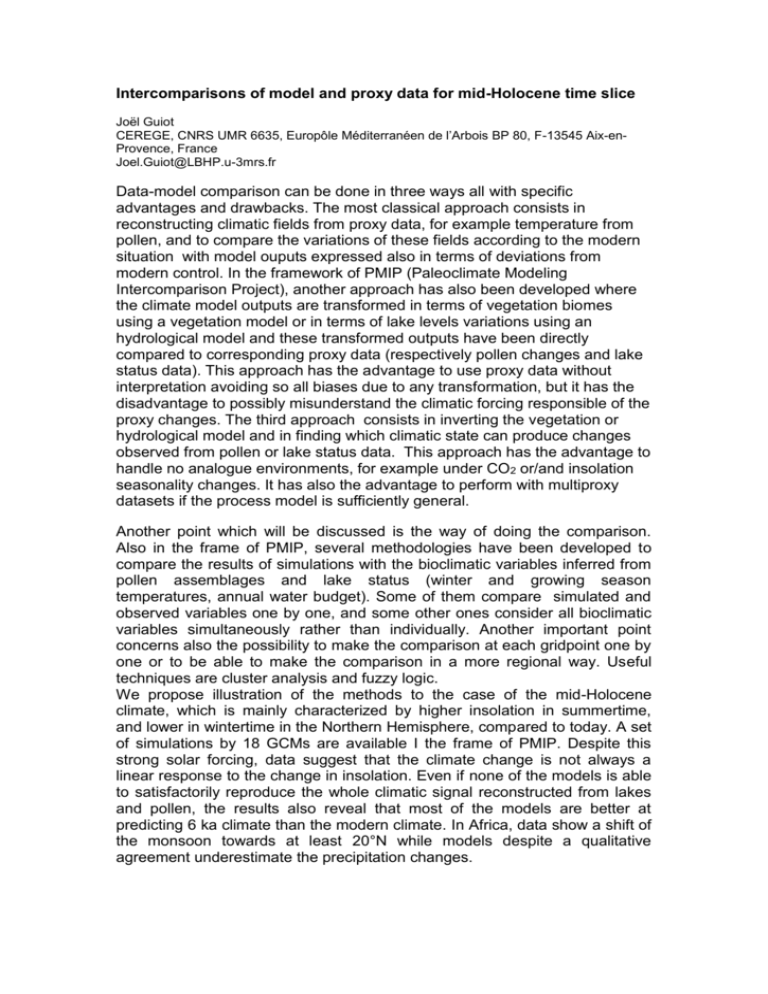
Intercomparisons of model and proxy data for mid-Holocene time slice Joël Guiot CEREGE, CNRS UMR 6635, Europôle Méditerranéen de l’Arbois BP 80, F-13545 Aix-enProvence, France Joel.Guiot@LBHP.u-3mrs.fr Data-model comparison can be done in three ways all with specific advantages and drawbacks. The most classical approach consists in reconstructing climatic fields from proxy data, for example temperature from pollen, and to compare the variations of these fields according to the modern situation with model ouputs expressed also in terms of deviations from modern control. In the framework of PMIP (Paleoclimate Modeling Intercomparison Project), another approach has also been developed where the climate model outputs are transformed in terms of vegetation biomes using a vegetation model or in terms of lake levels variations using an hydrological model and these transformed outputs have been directly compared to corresponding proxy data (respectively pollen changes and lake status data). This approach has the advantage to use proxy data without interpretation avoiding so all biases due to any transformation, but it has the disadvantage to possibly misunderstand the climatic forcing responsible of the proxy changes. The third approach consists in inverting the vegetation or hydrological model and in finding which climatic state can produce changes observed from pollen or lake status data. This approach has the advantage to handle no analogue environments, for example under CO2 or/and insolation seasonality changes. It has also the advantage to perform with multiproxy datasets if the process model is sufficiently general. Another point which will be discussed is the way of doing the comparison. Also in the frame of PMIP, several methodologies have been developed to compare the results of simulations with the bioclimatic variables inferred from pollen assemblages and lake status (winter and growing season temperatures, annual water budget). Some of them compare simulated and observed variables one by one, and some other ones consider all bioclimatic variables simultaneously rather than individually. Another important point concerns also the possibility to make the comparison at each gridpoint one by one or to be able to make the comparison in a more regional way. Useful techniques are cluster analysis and fuzzy logic. We propose illustration of the methods to the case of the mid-Holocene climate, which is mainly characterized by higher insolation in summertime, and lower in wintertime in the Northern Hemisphere, compared to today. A set of simulations by 18 GCMs are available I the frame of PMIP. Despite this strong solar forcing, data suggest that the climate change is not always a linear response to the change in insolation. Even if none of the models is able to satisfactorily reproduce the whole climatic signal reconstructed from lakes and pollen, the results also reveal that most of the models are better at predicting 6 ka climate than the modern climate. In Africa, data show a shift of the monsoon towards at least 20°N while models despite a qualitative agreement underestimate the precipitation changes.
